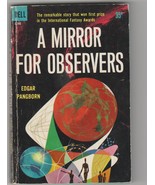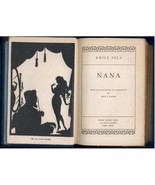I'm a book person. Here are some of my credentials for being a bookseller on Bonanza:
As a child, I became hooked on reading books while confined to bed with polio and couldn't watch tv. At college I majored in English and minored in Journalism. One of my first jobs, in Civil Service, was helping write and proofread a monthly magazine for the Army. Later, at a mission organization, I was the materials and shipping clerk, filling orders for and shipping out Bibles and other books. I've freelance proofread over 200 books since then. Reflecting my hobbies, I've put out a science fiction fanzine, sold vintage paperbacks by mail (before the Internet got big), and researched, wrote and sent to relatives a Family History Newsletter. Finally, I auctioned books on Ebay before coming to Bonanza.
As a bookseller, I specialize in Antiquarian/Collectible hardbacks and Vintage paperbacks. Categorywise, I'm strongest in science fiction/fantasy/horror, mystery, children's, movie/tv-related and history.
I purchase my stock carefully, always looking for interesting and collectible items, and try to give the buyer the best deal he or she is likely to find on the Internet. I encourage you to compare my copies (I describe them the best I can) and prices with those of other dealers and make up your own mind.
Tips for selling Antiquarian and Collectible books (sellers and buyers, take note):
Antiquarian (or antique) refers to books printed 100 or more years ago. Even quite recent books can be collectible, if they are reasonably uncommon and in demand by collectors. When selling an antiquarian/collectible book, some research on it is advisable. Get a book on identifying first editions, as this is important to most collectors. Remember that most books are reprints, even old ones (especially from the 1890s on). Imprints such as Grosset & Dunlap, A.L.Burt and Collier were primarily reprint publishers; Heritage Press and Modern Library issued nothing but reprints. Do not use the terms "rare" and "scarce" arbitrarily. "Scarce" means there are few other copies of a title or 1st edition available; "rare" means there are virtually no other copies available. Using them just to try to sell a book "cheapens" the terms and makes it harder for a reputable seller to be taken seriously when he uses them.
Except for paperbacks, dust jackets are very important to the modern book collector. Most fiction books, at least, since 1940 have little collector value without the jacket. Contrary to popular belief, quite a few antiquarian books, especially those for young readers, were originally issued with dust jackets. Because they're seldom seen today, a jacket on one of these old books increases its value significantly, depending on condition. And speaking of condition, the seller of a collectible book should describe its condition to the best of his ability. He or she should also give the name of the publisher and the year the copy was published. (All too often, publishers have provided only the copyright date, which is not always the same as that copy's publication date.) If the seller cannot determine the publication date (and thus whether it's a first edition), he should admit it and not make an assumption. Also, just because a book is very old, the seller should not assume it's to be expected it ought to be in dilapidated condition. A surprising number of antiquarian books have survived in nice shape, and these are what collectors want. Unless truly rare, a poor condition book has little value, except as a reading copy (provided no text is missing).
No grading system is necessary so long as the seller sufficiently describes the book's condition. The system most often used employs the terms poor, fair, good, very good and fine, with in-between gradients such as VG+ and Near Fine. While "good" can describe a decent copy in other categories, its use in the antiquarian/collectible category usually indicates it is not a very desirable copy for the collector. In my opinion, most collectible booksellers should conform to this system for the sake of coherence.
Pricing collectible books is tricky. I strongly recommend using sites such as Amazon or AbeBooks for guidance, even though prices usually vary greatly for similar copies. Pricing without much knowledge of values seems to less often result in underpricing than in overpricing, sometimes grossly. I've seen some books selling for up to 100 times probable value. Books like that have nearly zero chance of ever selling, though they can encourage others to try selling their books at similar prices.
I don't claim to be an expert at selling books. I'm just passing on some things I've learned myself and information I've read by more veteran Antiquarian booksellers. Hope this has been helpful to you.



























